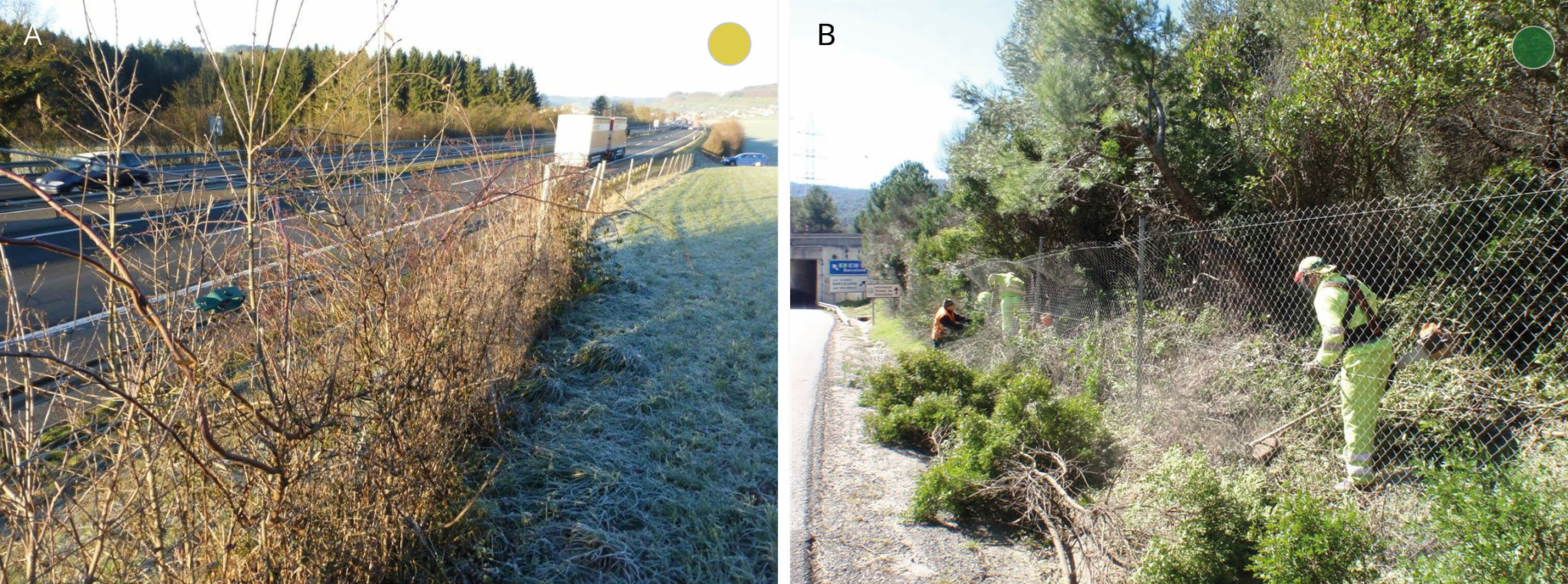Fences must be thoroughly checked as part of the ordinary road inspection schedule at least once a year and more frequently during the first year after installation, and also in sections of particular conflict or after strong winds, floods or other climate events that can damage fencing (see Chapter 7 – Maintenance). Beyond inspection for regular maintenance, particular attention must be paid to how mesh is fixed to the posts, to connections with the various devices, and how the fence is fixed to the ground (Figure 5.2.29).
Planting vegetation beside fencing is a controversial topic which requires monitoring and evaluation to provide any evidence-based recommendation. A dense row of bushes planted along the fence exterior is recommended in some European countries with the aim of discouraging deer from jumping over and to reinforce the fence corridor effect, guiding wildlife to crossing structures. On the contrary, other countries advise against this practice because it has been observed that some species, such as roe deer, attempt to jump over vegetation with the risk of striking or breaching the fence (Figure 5.2.30A).
A corridor free from bushes and tree branches beside fencing is recommended by many transport operators. The main aim is to avoid damage caused by vegetation to the fence. It also could prevent species such as pine or stone marten, from climbing over the fence (Figure 5.2.30B).
In every situation, the planting of vegetation that provides edible fruit or is attractive to foraging animals must be avoided.
Special attention should be paid to places where fencing crosses a ditch. Devices can be installed to allow water to flow while preventing wildlife from entering infrastructure (Figure 5.2.31).


